 |
| Sri Lanka Frogmouths |
October 30 to November 8, 2022. This post is a little longer than usual, but will wrap up our India tour. From the Andaman Islands we flew to far south India and the Western Ghats Mountains. There are many endemic and near-endemic birds in this region and we were keen to see as many as possible. We started near the Thattekad Wildlife Sanctuary, a deciduous lowland moist forest surrounding the Periyar River. This is also the home of our guide Sudeesh so we were in for a real treat. His knowledge of the local birds, and especially where to find the difficult species, is second to none. This is also leech country, and after the recent rains the little blood suckers were out in force. Donating some blood to the forest creatures was a small price to pay for such magnificent birding. There were many great species seen during our two full days in the area, but none better than the mega-difficult Sri Lanka Frogmouth and Sri Lanka Bay-Owl. The Bay-Owl was just crazy looking, no other way to describe this strange owl. The nocturnal frogmouth was seen as a roosting pair. We've seen many other frogmouth species, but none can compare to the cuteness factor for this dimunutive species. And since we were close to home for Sudeesh, and it was a weekend, his 10 year old son Adithyan joined us. This wonderful young man is already a fine birder and well on his way to following in his father's footsteps as a top guide. eBird list Thattekad day 1
eBird list Thattekad day 2
 |
| Periyar River |
 |
| Hornbill Lodge |
 |
| Young Adithyan and guide Sudeesh |
 |
| The leeches were hungry |
 |
| Donating blood to the local wildlife |
 |
| Black-backed Dwarf-Kingfisher |
 |
| Crimson-backed Sunbird |
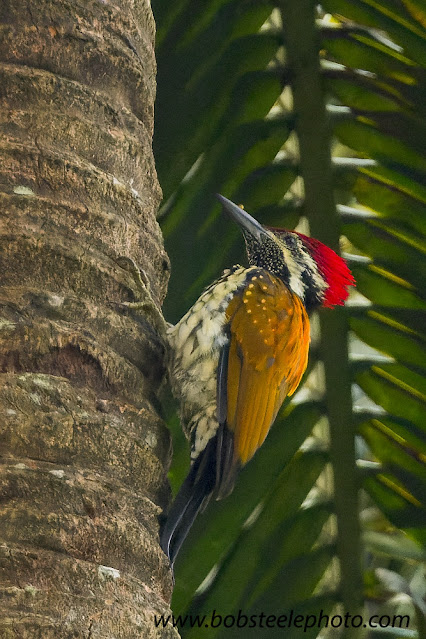 |
| Greater Flameback |
 |
| Malabar Gray Hornbill |
 |
| Malabar Trogon |
 |
| Sri Lanka Bay-Owl |
 |
| Sri Lanka Frogmouths |
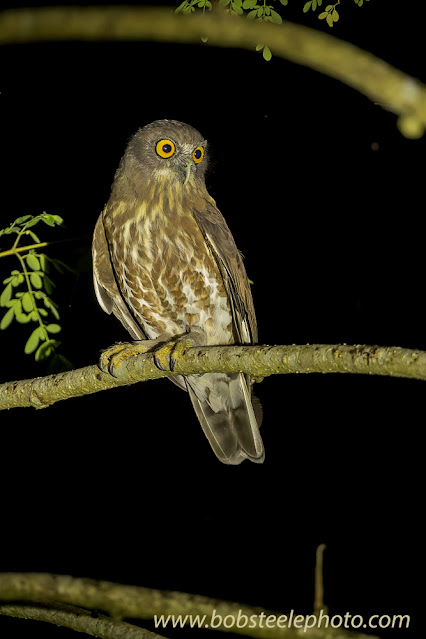 |
| Brown Boobook |
 |
| Indian Pitta |
 |
| Jungle Owlets |
 |
| Loten's Sunbird |
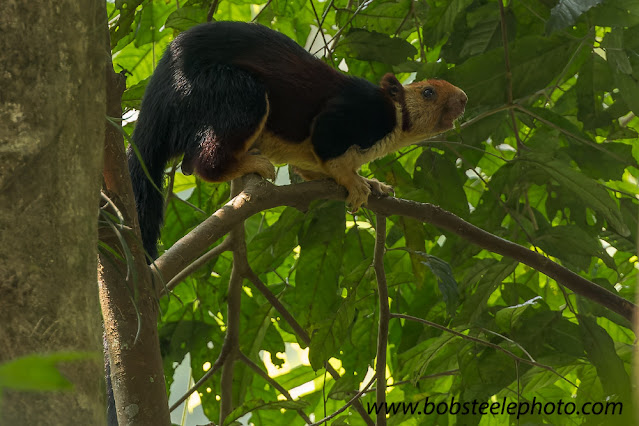 |
| Malabar Giant Squirrel |
 |
| Mottled Wood-Owl |
 |
| White-bellied Blue Flycatcher |
From Thattekad we move farther southeast into the Western Ghats and the Periyar Tiger Reserve (National Park). This reserve isn't a place for sighting tigers like the reserves we visited in the north. It is isn't set up with roads for safaris and is much more dense jungle. With a trained park ranger we were allowed to walk into the reserve for several excellent bird outings one afternoon and the following day. On our second day we took a bamboo raft across an arm of Periyar Lake for an all morning outing in the forest. And that evening we went to a cultural event of 400 year old Indian performance dance in the small village of Kumily. Lots of fun.
Under the heading of Type 2 Fun (not fun while it was happening, but fun to look back on and talk about), we went out for a walk on the reserve the second afternoon. A couple of miles out into the forest we came upon a herd of Gaur (Indian Bison) blocking our path. That forced us to turn around. Shortly afterward a bull elephant crossed the road in front of us. Uh oh. You absolutely don't mess with a bull elephant in his territory, but we couldn't retreat because of the herd of Gaur. We were truly between the proverbial rock and a hard place. Our ranger guide had us stand absolutely still and quiet while he carefully advanced toward where the elephant had gone into the forest. Upon deciding that the elephant was far enough off the road he had us make a run for it. And I mean run. And we didn't stop for several hundred yards. Olympic records may have fallen that afternoon it there was a stopwatch...
eBird list Periyar Reserve first afternoon
eBird list Periyar Reserve next morning
 |
| Our bamboo raft |
 |
| Lake Periyar |
 |
| The Gaur blocking our trail |
 |
| Getting into the cultural event was quite the madhouse! |
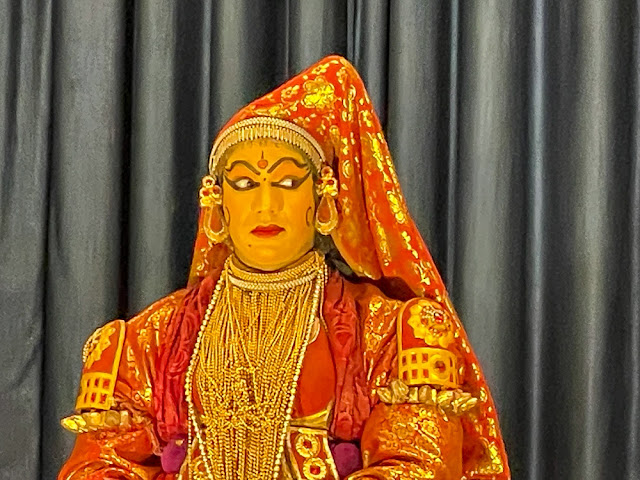 |
| This lady could do things with her eyes that would astound you |
 |
| Bar-winged Flycatcher-Shrike |
 |
| Crazy looking insect |
 |
| Malabar Giant Squirrel |
 |
| Malabar Parakeet |
 |
| Malabar Starling |
 |
| Brown-breasted Flycatcher |
 |
| Gaur |
 |
| Gaur |
 |
| A male Malabar Trogon, and as open as I ever saw one |
 |
| Orange-headed Thrush |
 |
| A four frame diving sequence of a Pied Kingfisher |
 |
| By the time it hits the water it is very streamline |
 |
| White-bellied Treepie |
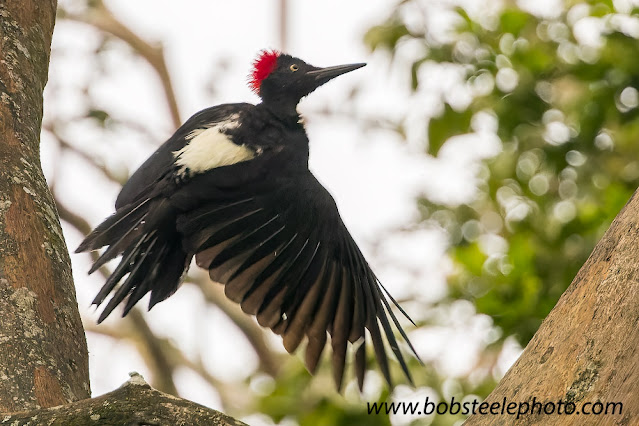 |
| White-bellied Woodpecker |
The following travel day was foggy and rainy as we moved higher into the Western Ghats. By the time we reached the lodge at 5000 feet elevation it was really pouring rain. It did manage to let up for a few minutes right before sunset so we could bird the grounds. eBird list Olive Brook
 |
| Indian Scimitar-Babbler |
The next morning we traveled the short distance to Eravikulam National Park which protects some of the unique grassland and scrub montane forest habitat of the highest Western Ghats Mountains. It was beautiful and many of the birds we saw were new. And best of all we finished our outing and got under cover before the intense afternoon rain started. This mountain range receives over 120 inches of rain annually, and precipitation is a nearly every afternoon occurrence. The park is home to a unique mammal species: the endangered Nilgiri Tahr, a sheep-like ungulate in its own genus Nilgiritragus. eBird list Eravikulam National Park
 |
| The park is surrounded by vast tea plantaions |
 |
| Nilgiri Tahr females |
 |
| Nilgiri Tahr male |
 |
| White-bellied Sholakili |
 |
| Red-whiskered Bulbul |
 |
| Palini Laughingthrush |
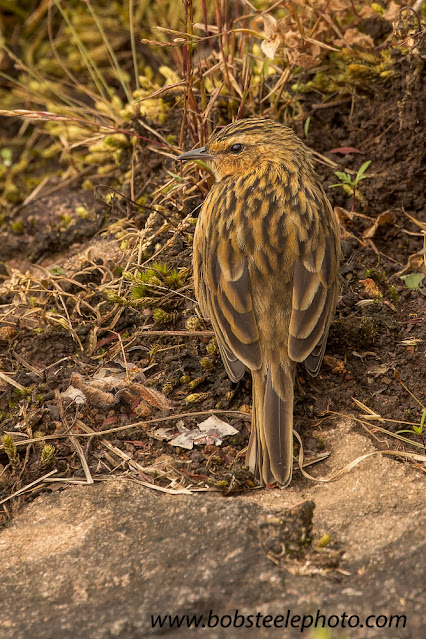 |
| Nilgiri Pipit |
 |
| Nilgiri Flycatcher |
 |
| Malabar Whistlingthrush |
 |
| Large-scaled Pit Viper |
 |
| Indian Blackbird |
From the park we drove through Chinnar Wildlife Sanctuary and on to the town of Ooty, high in the Nilgiri Hills at 8,000 feet elevation. We did some birding along the way and managed to get a few target birds before dark upon arrival including the very difficult Nilgiri Sholakili. In the morning before we headed down we got the rest of our target birds for the high elevation habitat including such beauties as Painted Bush-Quail and Black-and-Orange Flycatcher.
eBird list Ootay evening
eBird list Ootay morning
 |
| Morning in Ooty |
 |
| Cinereous Tit |
 |
| Crested Hawk-Eagle |
 |
| Nilgiri Laughingthrush |
 |
| Nilgiri Sholakili |
 |
| Black-and-Orange Flycatcher |
 |
| Painted Bush-Quail |
Our final destinatin in South India was just outside Mudumalai National Park at the base of the Nilgiri Hills. Here in the dry scrub forest and grasslands for a day and a half we would search for and find many regional endemics. We even spotted Dhole again, or Indian Wild Dog, this time in a pack.
eBird list afternoon
eBird list second day
 |
| Searching for Malabar Lark |
 |
| Indian (Asian) Elephant |
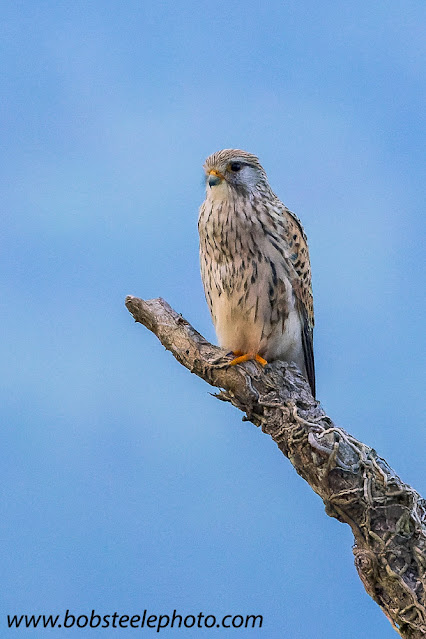 |
| Eurasian Kestrel |
 |
| Indian Nuthatch |
 |
| Spotted Owlet |
 |
| Dhole, or Indian Wild Dog |
 |
| Black-rumped Flameback |
 |
| Indian Pitta |
 |
| Malabar Lark |
 |
| Plum-headed Parakeet |
 |
| White-rumped Vulture |
If you've made it this far, and will permit me one more story of persistence, luck, and good fortune we seem to have on these trips, here it is. On our last morning we met up with the senior local guide Kuruvaesiddha to search again for Malabar Lark which we had missed the evening before. After that quick successful outing we went out for the rest of the morning with one of the younger guides in an hours long fruitless search for the tricky White-bellied Minivet. We returned to the lodge for lunch and to pack, as we were supposed to leave for the 4+ hour drive to the airport city and our early flight out the next morning. But tour guide Sudeesh knew we were disappointed leaving without the Minivet so he secretly made a plan and presented it to us after lunch. He had talked to the senior local guide by phone and made a plan for another outing in the late afternoon. They were confident we could get the Minivet but it would mean a very late arrival at the hotel. What the hell, we were in! We left at 3 pm in Kuruvaesiddha's jeep and stopped first for a couple of roosting owls. We then started the driving search for the difficult Minivet in the Acacia scrub forest. Another hour or more went by and with the light rapidly diminishing we stopped at a good spot. Everyone was searching the distant trees when Agnes said a bird had flown into a particular tree and called out. I got my binoculars on it first and said something to the effect of, "Son of a b*tch, that's it!!!" Everyone got on it and had great looks at both a male and female. From there we drove a short distance to a small tea stand on the side of the road to wait for our tour driver and van to meet us. But the guys weren't done yet, with virtually no light left we went out behind the tea stand and found another life bird thanks to Susan's excellent hearing, a Jerdon's Bushlark. Nothing like getting two life birds in the span of a few minutes, with no time remaining! Needless to say we got to the hotel that night very late...
 |
| Our transportation for the afternoon |
 |
| Owling in a bamboo and scrub thicket |
 |
| Outstanding guides Kuruvaesiddha and Sudeesh |
 |
| Tim celebrating a great day at the tea stand |
 |
| A happy bunch |
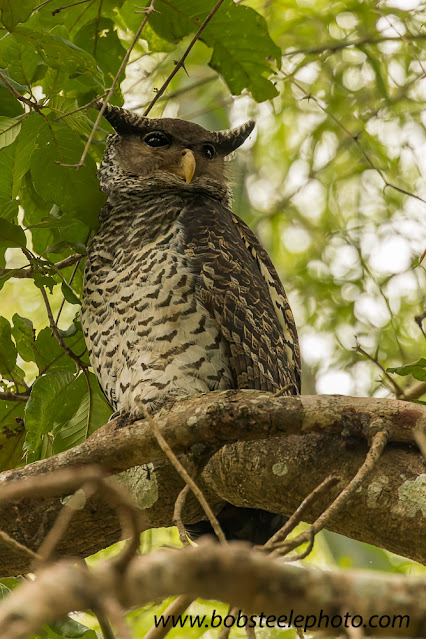 |
| Spot-bellied Eagle-Owl |
 |
| White-bellied Minivet |
 |
| Jerdon's Bushlark |
We flew the next morning to Delhi for our voyage home. But we had a few hours to kill so went on a quick city tour. The highlight of the afternoon was the 13th century Qutab Minar, or Victory Tower, a UNESCO World Heritage Site.
 |
| The happy group after another outstanding tour |
Thanks as always to our friends Tim and Agnes for another fantastic tour. And I want to add a special thanks to our outstanding guide Sudeesh for the Andaman Islands and South India tour. We had a wonderful time and saw so many fantastic birds. Well done!



























































































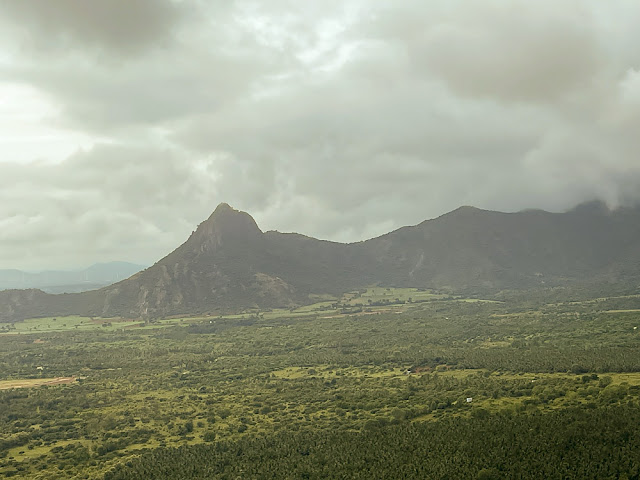






















Commenting on all 4 sections of this fabulous India trip. Thank you for your excellent commentary. And... there are never too many stories. Wow! All of the wildlife you saw. The birds are great and echo similar species around the world. Nice evolution lesson.. I loved seeing the scenery and your awesome guides. The unique Indian buildings and history are fabulous. I really appreciate all of your effort to post this incredible trip for us to share. Thank you very much, My Friend.
ReplyDelete